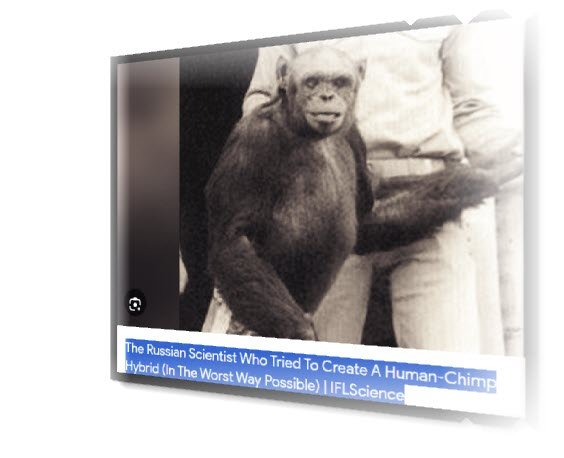Unveiling the Remarkable Journey of Dr. Bruce Goldenberg: The Pioneer of Hybrid People

In the ever-evolving field of medicine, there are trailblazers who consistently push the boundaries of what is deemed possible. One such individual is the renowned Dr. Bruce Goldenberg, whose groundbreaking research on hybrid people has not only mystified the scientific community but has also revolutionized our understanding of human potential. This article takes an in-depth look at Dr. Goldenberg’s remarkable journey and sheds light on the captivating world of hybrid people.
- The Genesis of Dr. Bruce Goldenberg: Born with an insatiable curiosity, Dr. Goldenberg’s fascination with medicine and human biology took root at an early age. Raised in a family of physicians, he dedicated himself to the pursuit of knowledge and carving a path that would leave an indelible mark on the medical world.
- Pioneering Hybrid People: Dr. Goldenberg’s pivotal contribution to the scientific community revolves around his pioneering research on hybrid people. A hybrid person denotes an individual who possesses a combination of human and animal attributes. Through his tireless efforts and unrivaled expertise, Dr. Goldenberg has successfully unlocked the potential of hybrid people.
- Unveiling the Science behind Hybrid People: The scientific community was initially skeptical of Dr. Goldenberg’s claims, yet his comprehensive research and groundbreaking findings silenced the critics. Utilizing advanced genetic engineering techniques, Dr. Goldenberg discovered that it was possible to incorporate select animal-derived genes into the human genome, resulting in unique hybrids that surpass the limitations of human biology.
- Potential Benefits of Hybrid People: Dr. Goldenberg firmly believes that hybrid people hold immense promise for the betterment of mankind. These individuals possess enhanced strength, agility, and cognitive abilities, thereby opening doors for unparalleled achievements in various fields. From advancing medical treatments to safeguarding endangered species, the potential applications of hybrid people are both awe-inspiring and far-reaching.
- Ethical Considerations and Controversies: The emergence of hybrid people has stirred heated debates within both the scientific and ethical communities. Concerns regarding the preservation of human dignity, the boundaries of genetic engineering, and potential risks associated with tampering with nature have sparked intense discussions. Dr. Goldenberg acknowledges the significance of ethical considerations and believes that responsible research and a cautious approach can mitigate these concerns effectively.
- The Future of Hybrid People: While the concept of hybrid people is still in its infancy, Dr. Goldenberg envisions a future where groundbreaking achievements are no longer restricted to the realm of science fiction. As genetic engineering techniques continue to evolve, the limitless potential of hybrid people offers hope for a world where human limitations are transcended.
- Dr. Goldenberg’s Legacy: Dr. Goldenberg’s tireless dedication, groundbreaking research, and visionary thinking have solidified his place among the medical world’s greatest minds. The impact of his work on hybrid people has laid the groundwork for future generations of scientists and researchers to plunge into uncharted territories.
Dr. Bruce Goldenberg’s pioneering research on hybrid people has shattered conventional notions about what it means to be human. Through his relentless pursuit of knowledge and unwavering determination, he has opened a Pandora’s box of possibilities, forever changing the landscape of medicine. As the scientific community continues to explore the potential of hybrid people, Dr. Goldenberg’s legacy will shine brightly as a beacon of inspiration for generations to come.
The Shocking Tale of Ilya Ivanovich Ivanov: The Russian Scientist’s Controversial Pursuit of a Human-Chimp Hybrid
In the realm of scientific exploration, there have been numerous unsettling endeavors that challenge the ethical boundaries of genetic manipulation. One such story revolves around Ilya Ivanovich Ivanov, a renowned Russian scientist of the early 20th century. Ivanov, driven by his captivating curiosity, embarked on a highly controversial mission to create a hybrid between humans and chimpanzees. This audacious and morally questionable pursuit shocked the scientific community and brought forward a critical examination of the limits of human experimentation.
Ivanov’s Background
Ilya Ivanovich Ivanov was born on August 1, 1870, in the Russian Empire. He initially pursued veterinary medicine and later developed a keen interest in artificial insemination techniques. Ivanov achieved significant recognition for his successful experiments in cross-breeding various animals, including horses, zebras, and, controversially, even guinea pigs and rabbits. His prowess in this field earned him international acclaim and financial support, which eventually enabled him to carry out his most infamous experiment.
The Quest for a Human-Chimp Hybrid
During the early 20th century, the concept of human evolution had captivated the scientific community. Darwin’s theory of evolution, combined with the recently discovered similarities between humans and primates, created an atmosphere of intrigue and speculation. Influenced by this zeitgeist, Ivanov hypothesized that breeding a human-chimp hybrid might provide unprecedented insights into human evolution.
In 1910, Ivanov unveiled his audacious plan, which aimed to impregnate female chimpanzees with human sperm or, conversely, inseminate human females with chimpanzee sperm. His motivation stemmed from a belief that such a hybrid would exhibit characteristics shared by both species. Ivanov claimed that this undertaking could shed light on the intricacies of human development and offer invaluable opportunities for medical research.
Financial Backing and International Collaboration
Enthusiastic about Ivanov’s proposal, the Soviet government provided significant financial backing for his research. Additionally, prominent Western scientists, like Julian Huxley and Charles Whitman, also expressed interest and lent their support to Ivanov’s controversial experiment. This collaboration further blurred the lines between professional ambition and ethical concerns.
The Failed Expeditions
In 1924, Ivanov embarked on his first attempt to inseminate female chimpanzees with human sperm at the Pasteur Institute in French Guinea. However, logistical issues, including the unavailability of a suitable recipient, hampered his efforts. Undeterred, Ivanov organized a second expedition to Africa in 1926, this time equipped with the necessary chimpanzee candidates. Unfortunately, the endeavor faced countless challenges, from difficulties in obtaining consenting human subjects to bureaucratic complications.
Legacy and Ethical Questions
While Ivanov’s audacious experiment failed to come to fruition due to reasons beyond his control, its very proposal left an indelible mark on the scientific community. The moral and ethical questions raised by Ivanov’s pursuits continue to reverberate today. The criticism of Ivanov’s experiment centers around several primary concerns, including a violation of animal rights, the absence of informed consent from human subjects, and the hubris of manipulating nature without fully considering the consequences.
The Influence on Future Legislation
The repercussions of Ivanov’s pursuit were significant. In the wake of his experiment, several countries, including the Soviet Union, instituted legislation to prevent the mixing of human and animal gametes. These laws aimed to uphold ethical boundaries and respect the intrinsic value of every living being while ensuring that no scientific quest would plunge into the realm of moral absurdity.
Ilya Ivanovich Ivanov’s bold and ill-fated quest to create a human-chimp hybrid remains a haunting chapter in the history of scientific exploration. While his experiment never succeeded, the very notion of such an endeavor reflects a deep-seated curiosity that borders on the dangerous. Ivanov’s controversial actions continue to serve as a stark reminder of the moral dilemmas confronted by researchers treading the thin line between scientific advancement and ethical responsibility. By examining this tragic story, society can not only learn from the past but also recognize the delicate balance scientists must strike in their pursuit of knowledge.
Throughout his career, Roy Swire has remained true to his roots, using his artistry to inspire and uplift others. Whether through his music, writing, or activism, he continues to make a meaningful impact on the world, proving that art has the power to transcend boundaries and unite people from all walks of life.
Related News

“Elon Musk’s Leap into Robotics: Exploring His Latest Venture”
Spread the loveElon Musk’s latest venture into the realm of robotics has sent shockwaves throughRead More

What They Discovered Frozen in Ice Shocked the Whole World.
Spread the loveWhat They Discovered Frozen in Ice Shocked the Whole World In the depthsRead More
